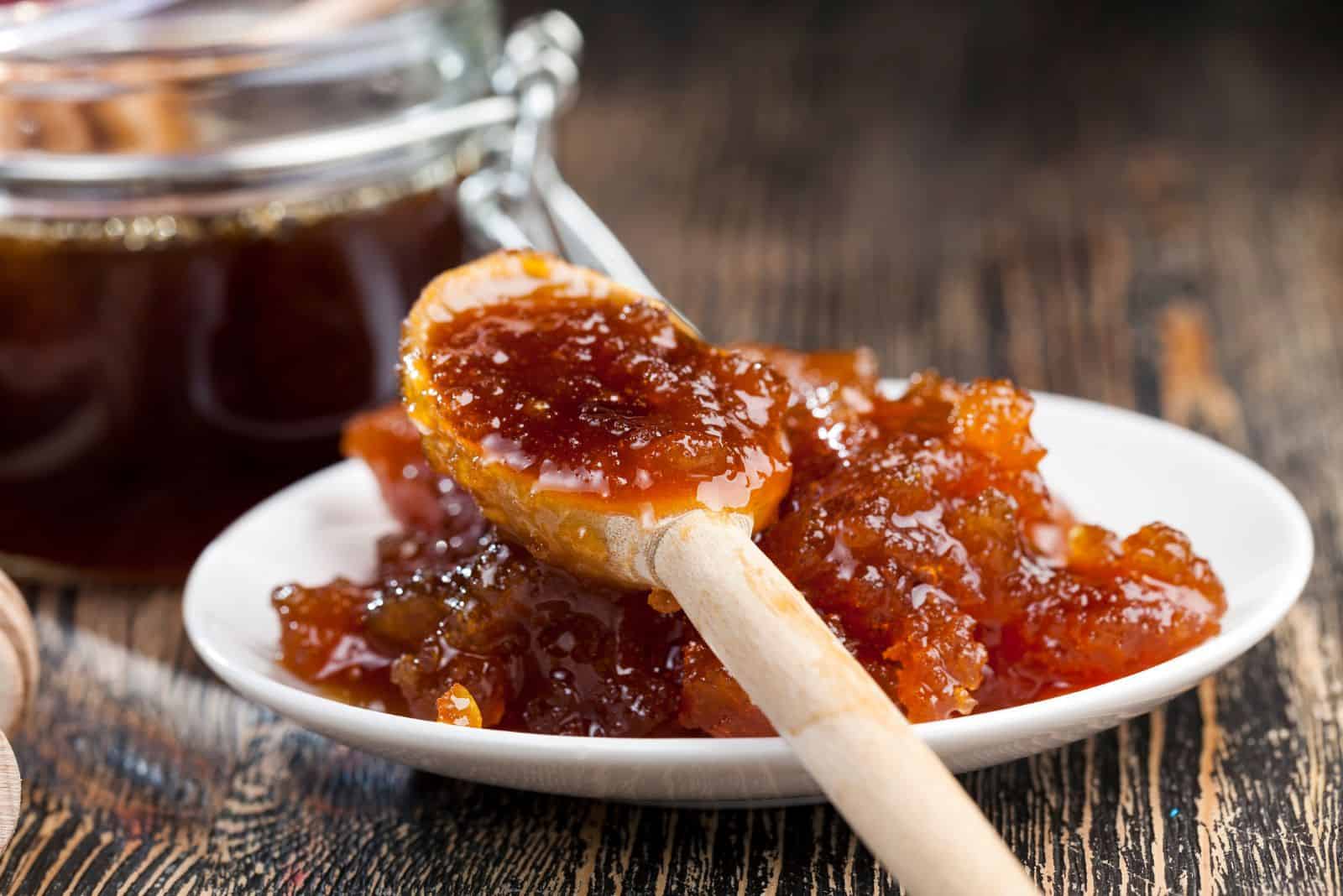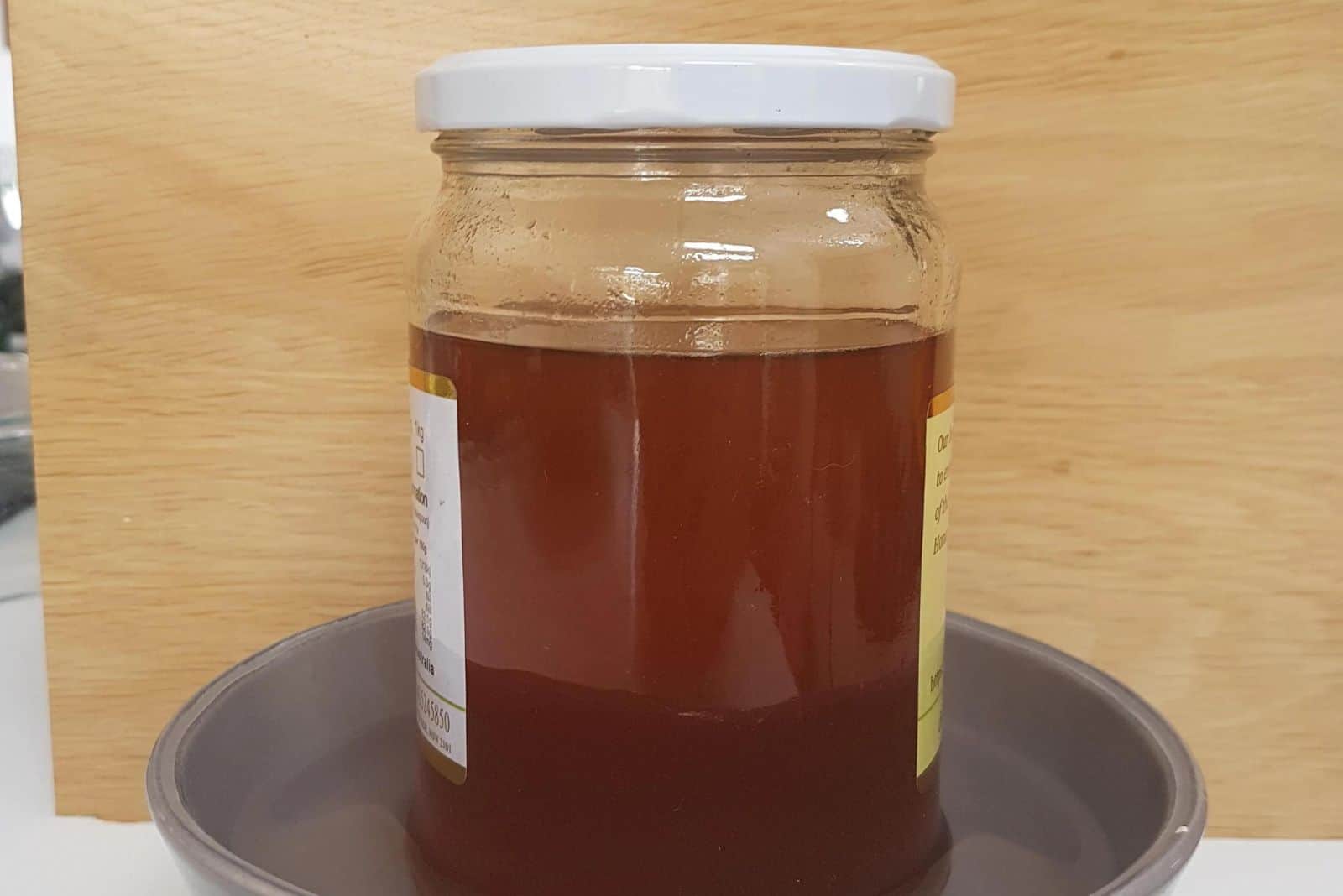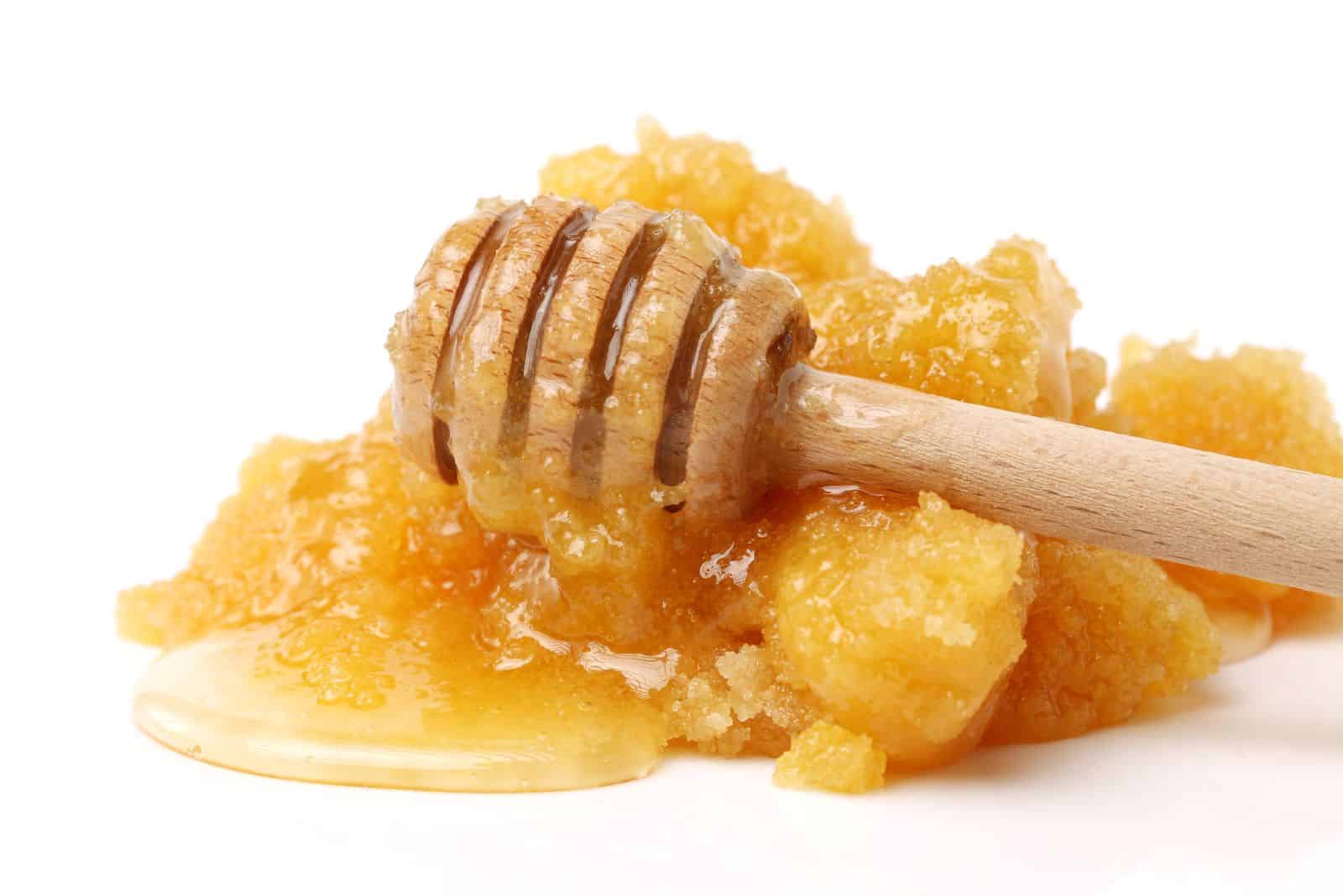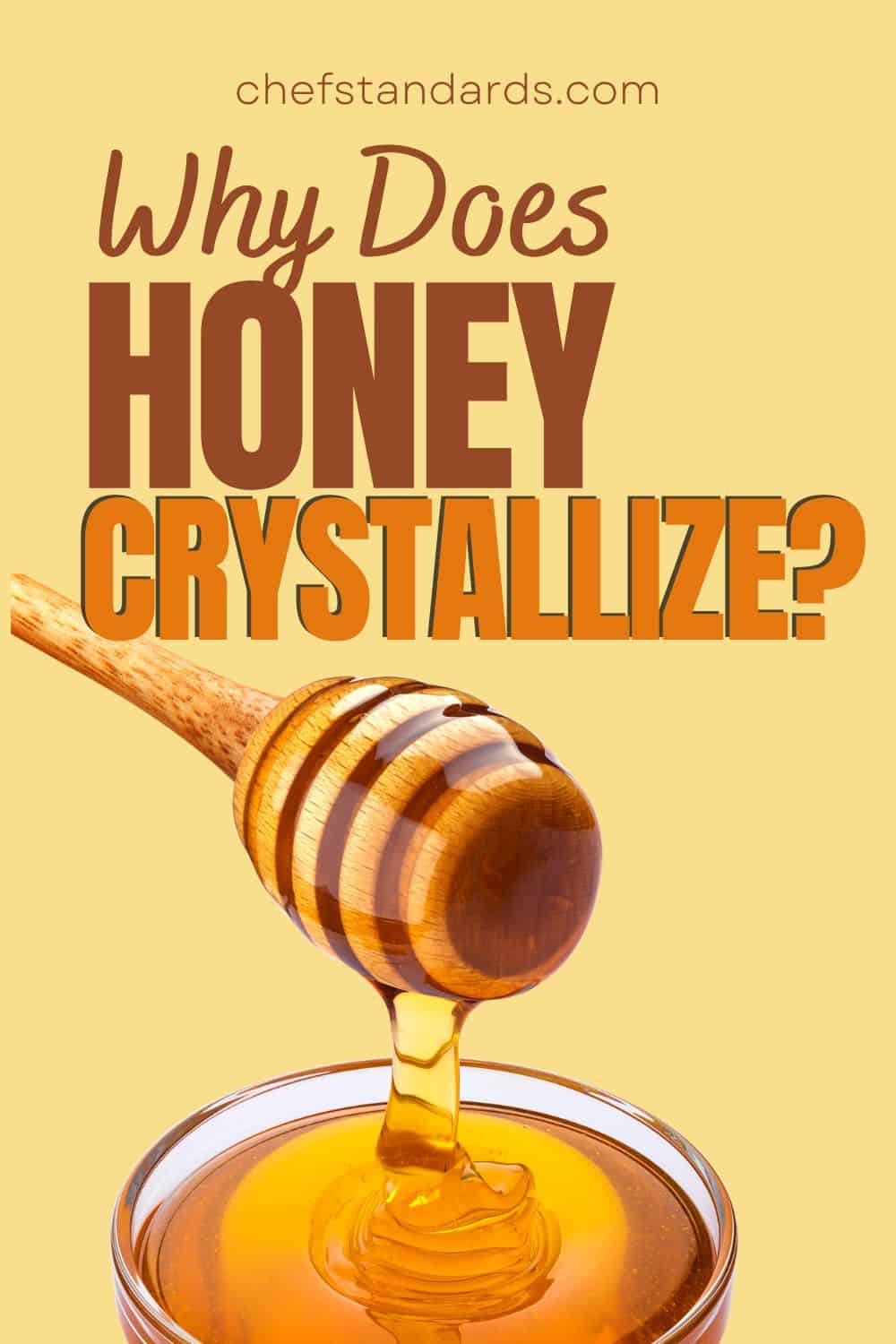Using honey as a sweetener in your favorite boba or bubble tea, or any beverage that needs to be sweetened is the best thing you can do. When you can choose between honey and some other sweeteners like sugar or artificial sweeteners, it is always better to choose honey.
Honey is a perfect combination of natural sugars and water, also scientifically known as a supersaturated solution produced by bees in beehives. It is rich in nutrients and it can provide you with numerous health benefits if you consume it on a regular basis.
However, most of us like to consume honey in the liquid state and the problem is that almost every type of honey turns hard after a short time frame, i.e. honey has crystallized.
From there, many questions arise, “Why does honey crystallize?”, “Does real honey crystalize?” “Why is my honey grainy?”, “How to keep honey from crystallizing?”, and many more.
In this article, I will try to answer as many questions as I can in order for you to understand the essence of honey and what that crystallization process of honey really means.
So, stay tuned to find out!
Quick Answer: Why Does Honey Crystallize?
Honey crystallizes because it contains simple sugar called glucose. Glucose has low solubility and that causes it to form tiny crystals that create the grainy texture of honey.
Another reason for the crystallization is the fact that honey contains small particles of bee glue, beeswax, and pollen that accelerate that natural process even more.
What Causes Honey To Crystallize?

So, why does honey crystallize and what makes honey crystallize? First, as I already said in the introduction, according to scientists, honey is a supersaturated solution. Honey is formed from water and natural sugars, and water is exactly what makes liquid honey.
But is there enough water to maintain honey in that liquid form? No, there is usually not enough water, although it really depends on the type of honey. Some types of honey contain more water than others so they stay in a liquid state for longer.
Aside from water, there are also already mentioned natural sugars. When it comes to honey, there are two main types of sugar: glucose and fructose. Fructose and glucose are very similar types of sugars because both of them are single sugars and the simplest forms of carbohydrates.
But there are some differences and one of them is important for today’s topic. And that is the fact that glucose has a much lower solubility than fructose. It means that it can crystallize very easily.
In that natural process of crystallization, glucose separates from water and forms tiny crystals that make your favorite sweetener become grainy.
I will also emphasize that there are different ratios of glucose in different types of honey. The bigger the ratio of glucose, the higher the chance that your honey crystallizes quickly.
I will also say that, eventually, every type of natural honey will crystallize. And when it does, in some types crystal form will be fine and tiny and you will have creamed honey, i.e. your honey will achieve a creamy texture.
Others will have large, gritty crystals, i.e. your honey will have a grainy texture. This totally depends on the type of honey, i.e. on the type of nectar that bees used when making that same honey.
What To Do When Honey Crystallizes?

In my opinion, you shouldn’t do anything significant when your honey crystallizes. I am saying this because the process of crystallization is a natural process and all real and natural honey must go through it. The only real question is when will that occur.
Aside from the water and glucose content, the time frame in which honey will crystallize also depends on small particles of bee glue, beeswax, and especially bits of pollen. These elements in the honey solution make a great environment for the glucose to crystallize.
Therefore, the more of these elements in the honey, the faster the honey will crystallize.
And why is that important? Well, it is important because these elements are very healthy and are part of every real raw honey. So, you can easily conclude that if your honey crystallizes, it is a clear sign that it’s real and natural.
The texture will be a little grainy, but it will still be far from honeycomb, for example, while it will retain the flavor of honeycomb at the same time.
At the same time, you will know that your honey is good so that you can freely add it to your favorite honey milk tea or any other tea.
If you really don’t like the grainy texture of crystallized honey, there are certain solutions for decrystallization when honey crystallizes. And, you can also keep your honey fluid for some time. In order to find out how to achieve this, I recommend you to continue reading.
How To Keep Honey Fluid?

There are certain ways to keep your honey from crystallizing for longer. I will start with the type of honey. You have to know that some types of honey tend to get hard more quickly than others.
If your goal is to maintain your honey in a liquid state for as much as you can, then it is best to buy a type of honey that contains more fructose than glucose.
Types of honey that are higher in fructose include sage, acacia, and tupelo honey. Avoid clover, lavender, and dandelion honey because they are much higher in glucose and for that reason, they tend to crystallize much faster.
Another factor that you should be aware of is the amount of pollen in the honey.
You have to be aware that pollen is the main part of natural honey and it provides you with some health benefits. But you also have to know that the more pollen in honey, the faster the honey will crystalize.
And the last factor that you must take into consideration is the temperature. If your goal is to maintain honey in a liquid state as much as you can and you buy a type of honey that crystallizes slower, it won’t mean a thing if you put your jar of honey in the fridge immediately.
This means that cooler temperatures tend to accelerate the process of crystallization. However, it is also not a good idea to put your glass jar of honey somewhere at a really high temperature. So, the solution is somewhere in the middle, i.e. at room temperature.
All in all, buy a type of natural raw honey that has a higher fructose and lower pollen content, keep it in a glass jar, and store that glass jar at room temperature at which its shelf life is practically infinite and where it won’t crystalize that quickly.
How To Decrystallize Honey?

There are several ways to decrystallize your honey. When it comes to this process, the key lies in temperature, which is quite logical since honey tends to crystallize at lower temperatures.
So, if you want to do the opposite, i.e. to decrystallize your golden sweetener, you must expose it to higher temperatures. Of course, you can’t do that however you want, but you have to know how to do it properly.
In my opinion and according to many beekeepers and other experts, it is best to use the so-called hot water bath method. All you need is a kitchen tap and a bowl. You will let warm water run into that bowl and place your glass jar of honey in it.
You will let it run until 3/4 of the glass jar is under water. After you accomplish that, you will stir the honey using a teaspoon.
Make sure that you stir it gently and continuously until the process of recrystallization begins. On average, it will take about half an hour until the honey reaches that recognizable liquid state.
And just one more thing. Avoid quick solutions when it comes to decrystallizing honey. Do not use boiling water or microwave to do this because very high temperatures can destroy the natural enzymes and nutrients of your honey, as well as its flavor profile.
FAQs

Is It Safe To Eat Crystallized Honey?
When honey crystallizes, it is perfectly fine to consume it. The process of crystallization is nothing else than the natural process of every real honey caused by the glucose and pollen within them.
Some people like it in this grainy state because they can easily spread it on their bagels. But there are some people who are not fans of crystallized honey. Either way, consuming crystallized honey won’t do you any harm and won’t produce any side effects as well.
What Is The Best Way To Store Honey?
Keeping honey in a properly sealed container in which it has been bought at room temperature is your best bet.
That way, it won’t be exposed to moisture and potential spoilage, although it is really hard for honey to go bad because of the high water content that protects it from harmful bacteria.
Storing it in a glass jar is also a good idea. You just have to make sure that both properly sealed glass jar and container are stored in an area with no direct sunlight and with average room temperature.
Also, avoid storing honey in a metal or plastic container because that material can cause oxidation.
Using Crystallized Raw Honey
This sweet golden liquid that comes from honeycombs is adored by so many people and it is also used in so many honey recipes by numerous chefs around the world. Most of us like it in a liquid state, but all types of natural honey tend to crystallize.Why does honey crystallize, why is that not such a bad thing, and how to keep it fluid are all the questions answered in this article and they will help you better understand honey itself and how to handle it properly.


